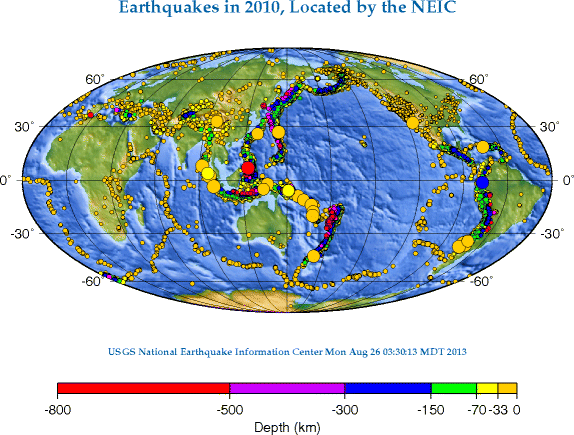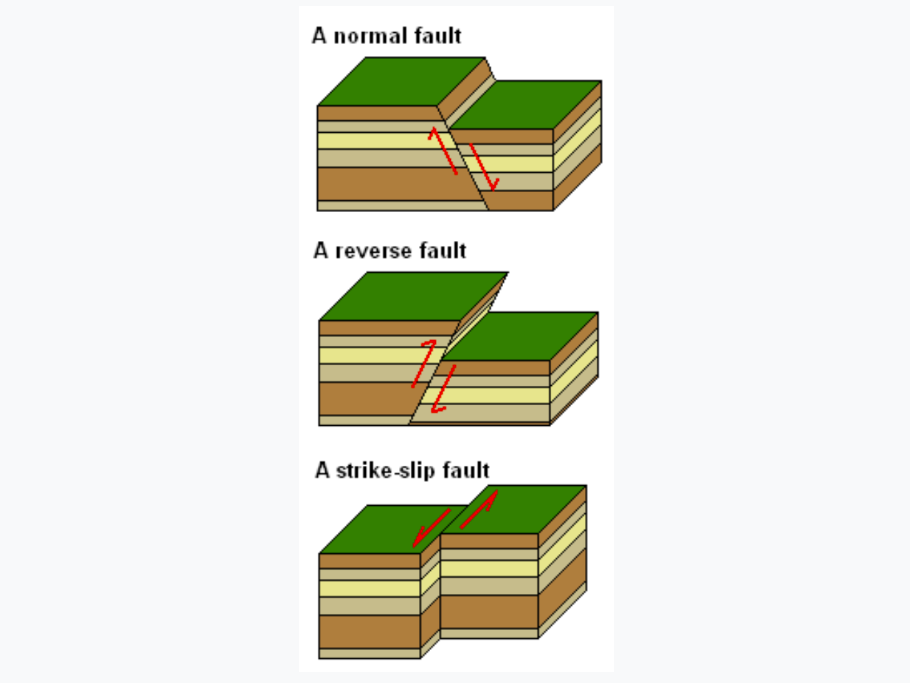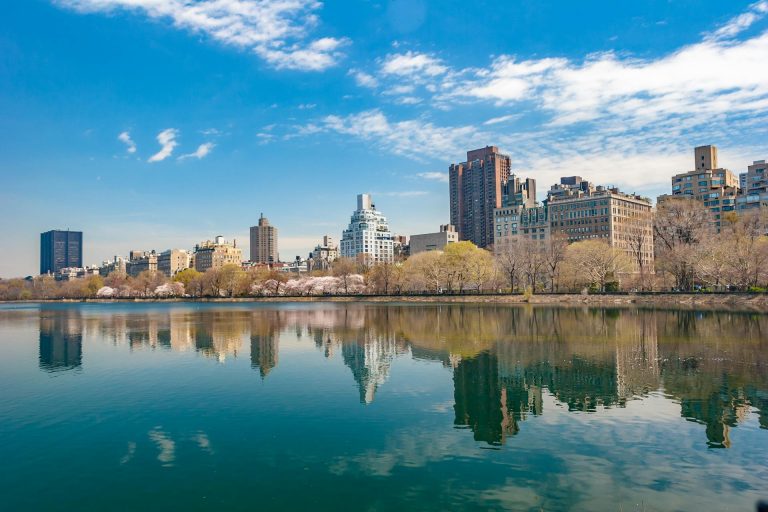In response to a rare 4.8 magnitude earthquake, followed by multiple, smaller aftershocks, many East Coast natives are grappling with earthquake awareness for the first time. Epicentered near Gladstone, New Jersey, slight tremors were felt as far south as northern Virginia and north to the border of New Hampshire.
No serious damage was reported, but the event raises many questions and concerns. Understanding the special nature of our earthquakes and how to stay safe can help quell the fears of another East Coast quake.
Earthquake basics

According to the widely-accepted theory of plate tectonics, the Earth’s lithosphere (crust and upper mantle) is made up of large rocky plates that essentially float on top of hot magma.
Although these tectonic plates fit together like a puzzle, they are in motion. The friction from their movement releases energy which can cause seismic shock waves. These waves travel in all directions from the focus, or epicenter, and can be felt as tremors, or quakes. The force of the quake depends on the type of movement, as well as the substrate the waves travel through.
Minor earthquakes occur all the time, to the tune of 10,000 per year. Most do little damage and many are only detectable by seismic monitors. About 16 major earthquakes (with a magnitude of seven or higher) occur each year worldwide. Aside from the magnitude, earthquakes can be categorized by the type of fault that generates them.

Success
You are now signed up for our newsletter
Success
Check your email to complete sign up
Normal faults occur with expansive movement, where the two plates are moving apart and there is a vertical shift. Strike-slip faults are characterized by mainly horizontal movement, as plates slip past each other.
Reverse faults occur at convergent plate boundaries, and result in subduction zones — where one plate is pushed under another. These quakes are the most devastating. The Cascadia Subduction Zone, along the West Coast of North America, for example, makes up the northern part of the San Andreas Fault.

Most earthquakes (about 90 percent) occur along the 25,000 mile Ring of Fire, which marks the edge of many tectonic plates where they meet the Pacific Plate. California and many island countries, well-known for destructive earthquakes or other seismic activity, are within this belt.
East Coast earthquakes
Since the East Coast is not situated along the border of any major tectonic plate, we experience far fewer earthquakes, but they aren’t unheard of. According to the United States Geological Survey (USGS), our earthquakes occur along faults within the North American plate. These internal faults are both less active and less understood.
While the West Coast offers plenty of opportunities for seismic studies, and sparse flora improves observability; most of the East Coast faults have been inactive for thousands, if not millions of years. According to the USGS, “any evidence of past earthquakes on the land’s surface in the eastern U.S. is often obscured by vegetation or is more subdued because of erosion.”
Although infrequent, our earthquakes tend to be felt over a broader area. Due to the maturity and density of our bedrock, the seismic waves are able to travel much more efficiently. The less-dense bedrock of the West Coast, which formed millions of years later, is heavily-faulted and absorbs much of the seismic energy — reducing the waves’ capacity to travel.
Our faults are also shallower compared with the deep subduction zones in the west, and our quakes tend to produce higher frequency shaking, something the USGS deems a hazard for shorter structures. According to the agency, tall buildings are more susceptible to slow shaking, while fast shaking is more likely to cause structural damage to low buildings.
Unpredictable nature of earthquakes
While scientists have not yet discovered a meaningful way to predict earthquakes — specifying time, place and magnitude — geologists say we can expect many aftershocks (of decreasing intensity) for weeks. In the unlikely event of a larger event, the best course of action is to be prepared.
Earthquake safety
According to the American Red Cross, we should “expect and prepare for aftershocks.” Their Earthquake Safety webpage offers the following advice:
During an earthquake you should Drop, Cover, and Hold On to protect yourself from falling debris. Practice with your entire household so everyone knows what to do.
DROP where you are onto your hands and knees
- This position protects you from being knocked down and allows you to crawl to a protected space.
COVER your head and neck with your arms.
- If a sturdy table or desk is nearby, crawl underneath it for protection.
- If you cannot find a protected space, crawl to an interior wall (away from windows.)
- Stay on your knees and bend over to protect yourself from injury.
HOLD ON until the shaking stops.
- If you are under a table or desk, hold onto it, as things will be moving. Use an arm to protect your head and neck.
- If you are not under a protected area, use both arms to protect your head and neck.
Additional advice for special circumstances is as follows:
- If in a car, pull over and stop (away from structures or tall trees) and put on the parking brake.
- If in bed, stay there. Turn face down and cover your head and neck with a pillow.
- If outdoors, carefully move away from buildings or other potential falling hazards.
- If inside, stay inside but avoid doorways, elevators, and windows.
Cosmic connections?

According to astrologists, our recent earthquake could have cosmic connections. Multiple celestial events, such as Mercury retrograde in Aries — increasing the odds of dramatic upsets; and the anticipated meeting of Mars and Saturn — two so-called “malefic” planets; have the cosmic community on the edge of their seats.
In addition, PEOPLE’s resident astrologist Kyle Thomas says that with Uranus going through Taurus, which “rules the Earth and the physical world,” there is an increased likelihood for natural disasters.
The fact that we are about to experience our second eclipse in three weeks adds another element of mysticism; but USGS seismologist Paul Earle made it clear, “This is unrelated to the solar eclipse…Earthquakes of this size have no correlation with celestial bodies.”







